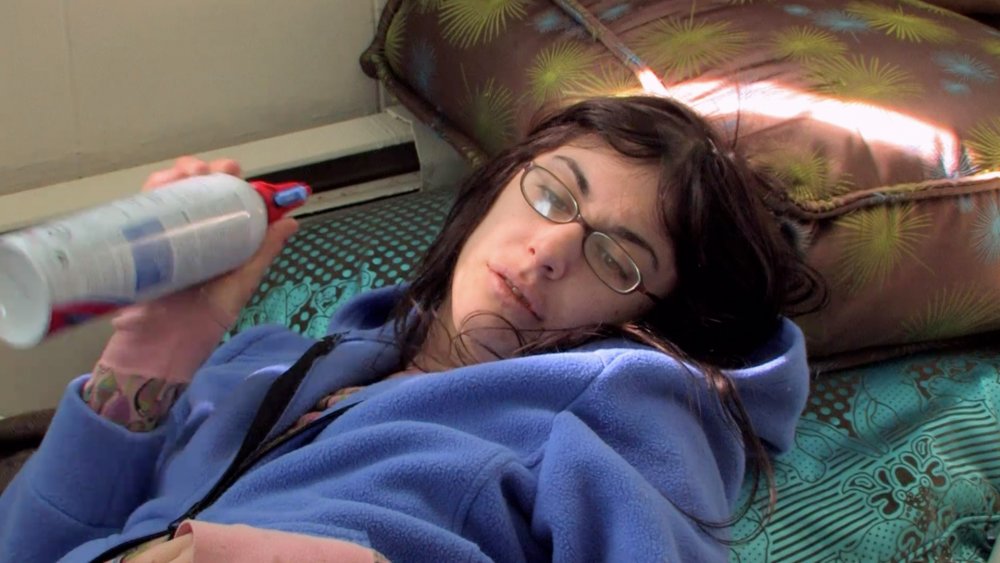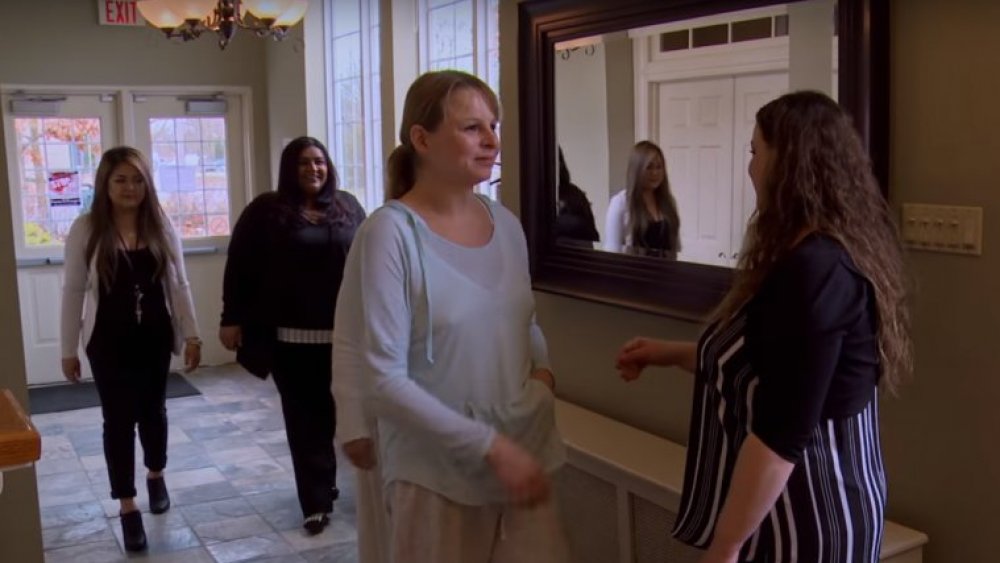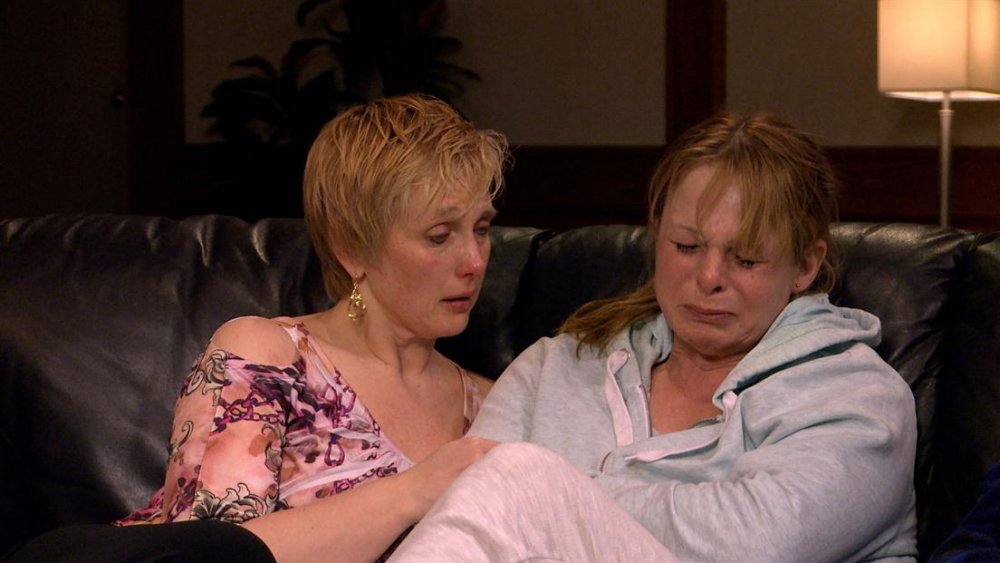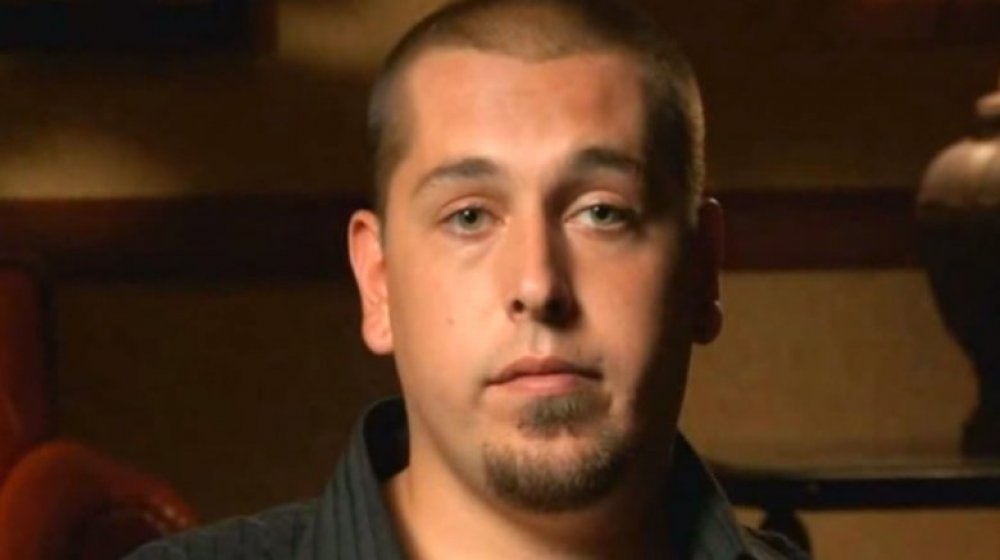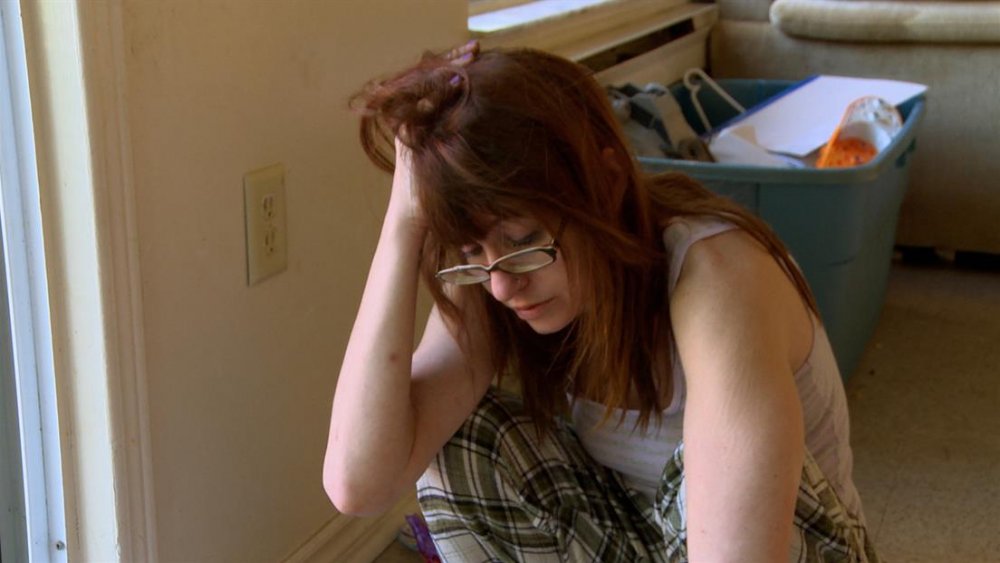What You Don't Know About Intervention
A&E's Intervention is one of the few serious standouts in reality programming, a genre otherwise known for modern-day, carnival-style programming, ranging from the cringe-inducing Dr. Pimple Popper to the gawk-inducing world of Here Comes Honey Boo Boo. Intervention, on the other hand, is a gritty look at the individual stories of people suffering through addiction. Each episode showcases a person's struggle with alcohol, drugs, or other addictive behavior, such as eating disorders. Following a confrontation with a professional interventionist, A&E arranges for a 90-day stay in a rehab facility, which could otherwise cost as much as $120,000 (per The Daily Beast). Intervention has received two Emmys and is one of the longest-running documentary-style reality programs; it's been on the air since 2005.
But, there is a dark side to this show. While Intervention doesn't appear to pull any punches as the subjects of its episodes black-out on camera and choose needles over their crying children, this show isn't always the shining knight on a white horse, saving addicts' lives, that it appears to be. In fact, critics say it can be just as exploitative as other reality shows, playing on our appetite for voyeurism at others' expense. Here's the untold story of Intervention.
The rehab centers can be shady
On each episode of Intervention, the rehab center is presented as the light at the end of the tunnel. After an emotional intervention — sometimes resulting in foot chases with a fleeing addict and appearances from local police — that moment when an addict finally agrees to treatment is the long-awaited victory. The exhausted family members cry with relief, feeling that at last, years of struggle may be coming to an end.
But dark details have come to light about the sober living facilities. The for-profit facility, A Sober Way Home, in Prescott, Arizona, has been featured on multiple episodes of Intervention, as well as Oprah. The parents of a 20-year-old with alcoholism and an eating disorder named Brandon Jacques won a $10.25 million wrongful death lawsuit against the rehab center (via Kansas City Business Journal), which has since closed. They said they sought out that particular facility because the family had watched Intervention together. "We watched three or four episodes," Brandon's father, Ted Jacques, told Vice, "and then my wife turned to Brandon and asked, 'Would you like to go to one of these places?' Brandon said, 'Yeah.'"
Jacques claimed A Sober Way was negligent about his care and had exploited their son's addiction for profit. This type of charge is hardly uncommon among rehab centers; the owner of a Delray Beach, Florida, recovery center, Daniel Kandler, was arrested on 93 counts of patient brokering in 2017 (via Palm Beach Post).
An intervention may be an outdated treatment approach
The premise of Intervention is that the best way to get an addict to commit to recovery is for friends and family members to confront their loved one and tell them how they've personally been impacted by the lies, the fear, the neglect, and sometimes the abuse, they've suffered from their relationship with someone in the throes of addiction. This strategy is called the Johnson Model, and it was created in the 1960s by a priest named Vernon Johnson, according to the Association of Intervention Specialists, a professional organization for interventionists.
But psychology experts say that newer strategies, including one technique called motivational interviewing, do a better job of achieving a long-term commitment to recovery, because with these methods, the patient is genuinely motivated to change. In contrast, the shame and pressure an addict may feel during an intervention may get them to say yes to rehab, but once the family's gone home and, in the case of Intervention, the camera crews have left, returning to previous habits can be very tempting, according to Psychology Today.
Forced treatment can lead to deadly relapses
Pressuring an addict to agree to go to rehab may be more dangerous than leaving that person to fend for themselves, experts have noted. If you're not fully motivated to recover, you're more likely to relapse, and the physical impact of using after detox is quite taxing on an addict's already-fragile body. "People who die of overdoses, if you look at their history, they were most likely recently in rehab or jail," Dave Malloy, a drug abuse counselor, told The Daily Beast.
It comes down to a loss of tolerance after a period of time away from a substance. As Dr. Richard Blondell, vice chair of addiction medicine at the University of Buffalo's Jacobs School of Medicine and Biomedical Sciences, explained to Time: "When a relapse occurs, someone may take a dose that they think is going to be effective — and it may even be half of what they were taking before — but because they've lost their tolerance, those tend to be lethal." Indeed, more than three dozen former Intervention addicts died after the show aired, according to Intervention Directory, a website run by followers of the show. The majority of these deaths were related to overdoses or medical conditions related to drug use.
The show mainly focused on white addicts
One longstanding criticism of Intervention is that it mainly spotlights white addicts; in fact, 87 percent of the addicts on this show are white, according to an academic study by City University of New York, entitled, Intervention: Reality TV, Whiteness, and Narratives of Addiction. Most of the interventionists on the show are also white. Yet, non-whites make up more than 20% of opioid deaths (per PBS). So why aren't more people of color part of the Intervention narrative?
Critics say that focusing on white addicts makes them more relatable to a white audience and that this is the secret to the show's appeal. An article in Hazlitt referred to this concept as "smug reality," describing one addict as, "her own worst enemy, but not to the extent that she becomes unsympathetic. As viewers, we get both a sense of superiority in watching her bottom out, and a sense of satisfaction in watching her get better."
But indulging in a narrative where whites are the only protagonists may be making us blind to the fact that addiction is destroying minority families as well. "I think there is a risk that it's being somewhat overlooked and overshadowed by the death rates among whites," Jennifer Tolbert, the director of the State Health Reform program at the Kaiser Family Foundation, told PBS.
